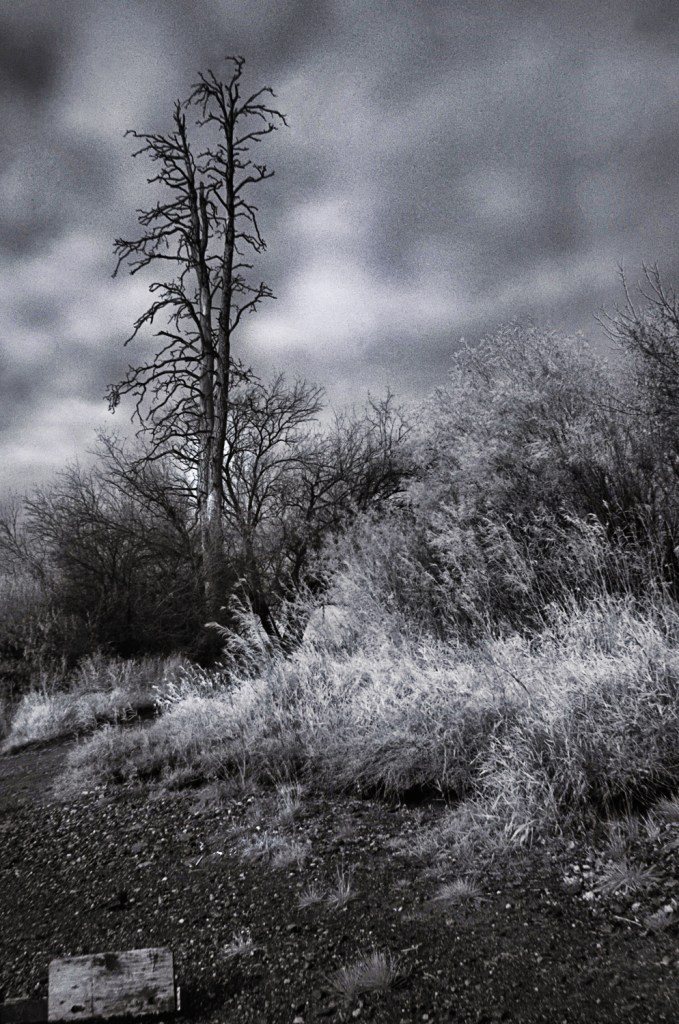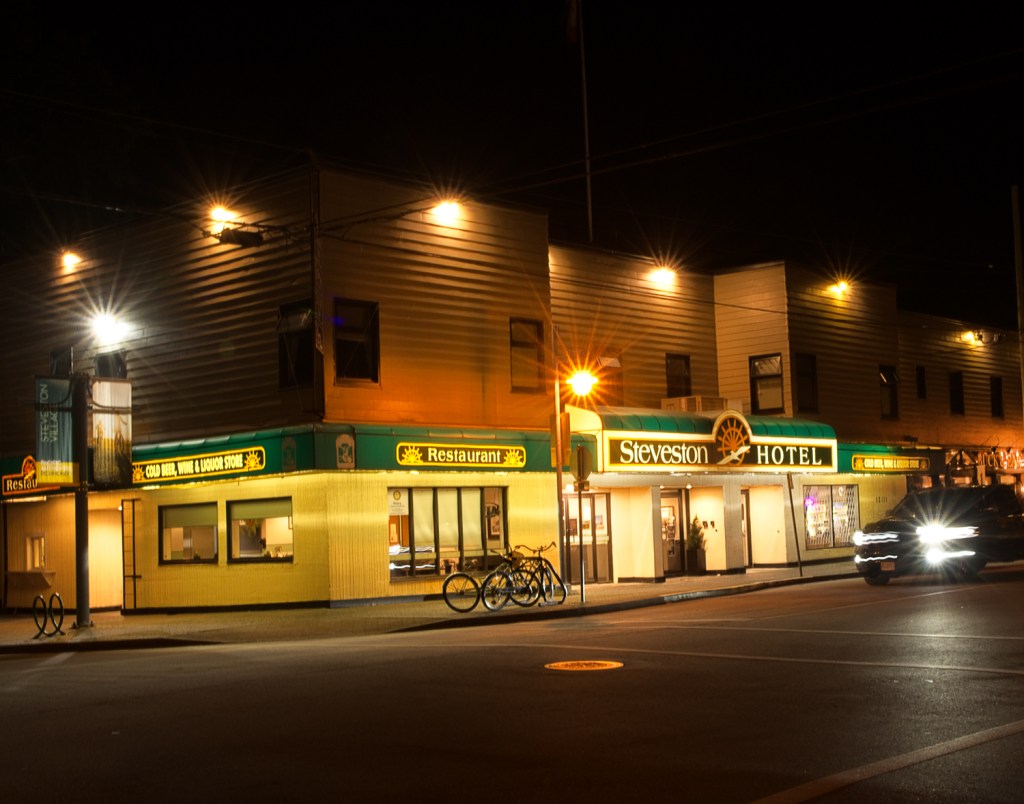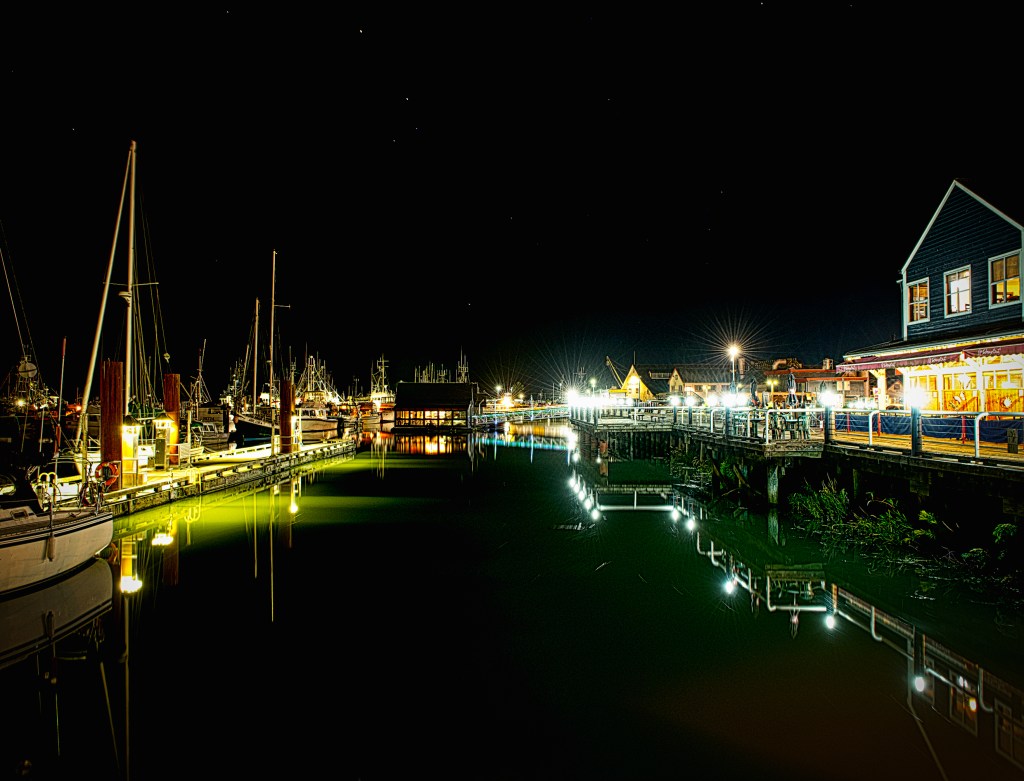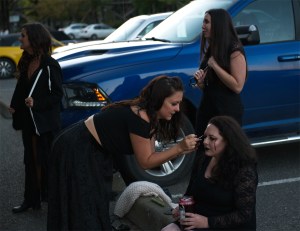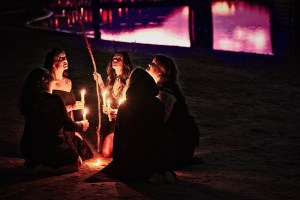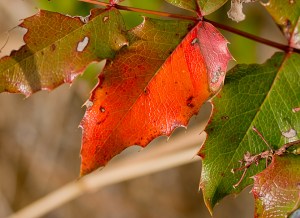




On the two-hour drive to Kelowna my car was filled with Christmas music that we sang along with. After all Christmas is on its way and as I write every year at this time…I like Christmas music.
After missing my annual December Christmas photo trip last year Jo and I were excited and eager to get to Kelowna, check into our hotel, eat supper, and finally after a two year wait, spend a dark evening wandering the decorated and snowy lakefront making pictures. Then get up before the morning sky brightened and make our way to photograph the 120-foot tall “Tree of hope”.
“For 24 years the Tree of Hope at Landmark Centre has been a bright symbol of inspiration and hope to our community. The Tree of Hope is over 120′ tall and has approximately 25,000 energy-efficient bulbs. From late November until January, the Tree of Hope is a visible reminder to the citizens and visitors of Kelowna that the Christmas season is a time of generosity and compassion, bringing joy to friends and family.”
I have been photographing that tree for several years. I discovered it by accident when my wife and I were in Kelowna on some tenants that were leaving a house we owned and by coincidence tenant began changing around the beginning of December for several years in a row. We would overnight and I would get up before dawn each year to photograph the tree.
When I sold that house it was on December 1st some years ago I decided to stay the night and texted my friend Jo to tell her about photographing the tree and the lake side lights. At that time I hadn’t known Jo for long, but it was that conversation when she said she wanted to come if I photographed it again. That was the beginning of what we started calling our “photo adventures”.
We sat eating pizza by our fifth floor hotel window that looked out on the lakeside park with people going round and round on the ice skating rink and waited for the sun to go down so we could spend the evening along the waterfront. Jo had packed our 14-24mm and 17-35mm lenses for the morning photos of the tree, but I used my 24-120mm that evening.
For the dawn photos I like how the blue early morning light separates buildings, slightly iluminates distant clouds and adds background colour to lights, especially Christmas lights.
We left our hotel about 6:30AM. It was still dark and we were sure we had plenty of time. However, the morning only had a few clouds and the sky began to brighten so we were moving fast once we started to make pictures.
The last time I was there I used a 14-24mm to photographed the tree. This time I had the 16-35mm. There still is distortion along the edges, but unique wide perspective was great and didn’t force me to move back at all.
Photography after dark (this time of year) allows photographers to visually play with the Xmas lights, reflections and the pools of light on the snow, walkway and, for us, the lake. It’s easy to be creative and even mistakes can be keepers




